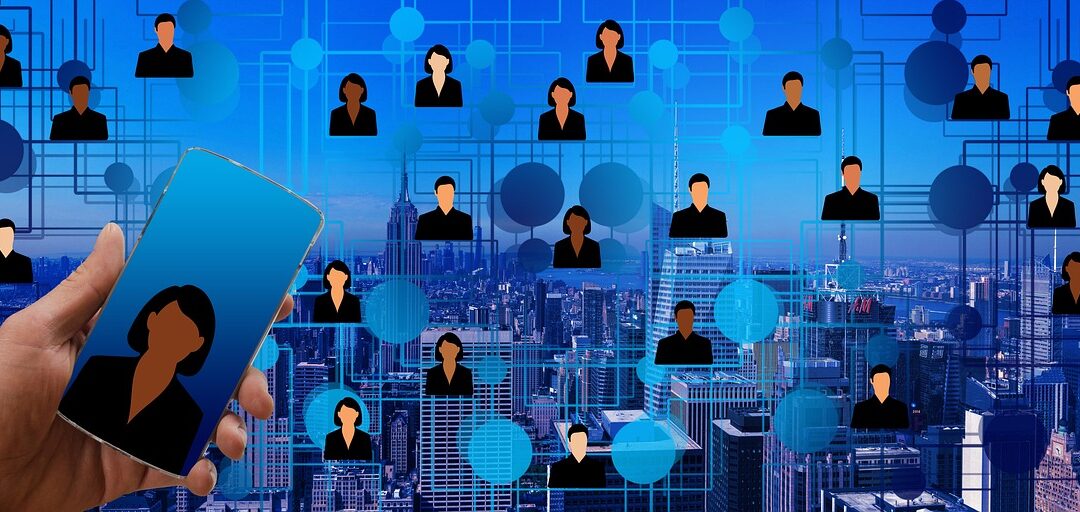
by Joy Maitland | Nov 27, 2025 | Board Members, Board Trustees, CEO, CFO, COO, CIO, General Managers, Heads of Divisions, Human Resources (HR), Managing Directors, Middle Managers, Non-Executive Board Members, Senior Managers
Agency is the point where ability meets action, and where leadership either accelerates or quietly stalls. A conversation about initiative, ownership, self-direction, and psychological permission
The leadership quality few people name
When senior leaders talk about why some individuals advance and others stagnate, they often struggle to articulate the difference. Two people can have the same intelligence, the same experience, and the same capability, yet their career trajectories diverge dramatically.
The missing differentiator is agency. It is the quiet force that separates those who wait from those who step forward, those who observe from those who act, and those who stay in place from those who expand their influence.
What agency really means
Agency is not authority. It is not confidence. It is not enthusiasm. Agency is the belief that you have the right and the responsibility to shape outcomes rather than respond to them.
Leaders with agency do not wait to be invited. They do not ask for permission to contribute. They do not shrink in the presence of ambiguity. They step into space that others leave empty.
Agency is where ability becomes action.
How agency reveals itself in leadership
You can see agency in subtle behavioural signals.
- The leader who anticipates rather than reacts.
- The colleague who moves a decision forward instead of escalating it upward.
- The manager who resolves issues rather than narrating them.
- The individual who expands their role rather than defending its limits.
These people do not push aggressively. They advance naturally.
Why agency is disappearing in some organisations
Many organisations unintentionally create dependency. Systems reward compliance. Cultures punish initiative. Leaders who need control prevent others from acting. Feedback focuses on risk rather than growth.
In such environments, even capable leaders learn to wait. They begin to look upward instead of inward. They trade agency for approval.
The organisation does not become safer. It becomes slower.
The psychological side of agency
The greatest barrier to agency is not competence. It is permission. It is the internal voice that asks:
- Am I allowed to act?
- Do I risk being criticised?
- Will someone say I overstepped?
- What if someone else should have done this?
Leaders who lack agency are often not passive. They are cautious. And caution masquerading as professionalism is one of the greatest blockers of leadership growth.
The moment agency becomes visible
There is a distinct turning point in leadership development. It is when a person shifts from waiting to contributing, from following to shaping, from executing to initiating.
This shift does not require a new title. It requires a new self-concept. The moment someone begins to see themselves as a creator of momentum, their leadership trajectory changes permanently.
How organisations can develop agency rather than suppress it
Agency strengthens when leaders create environments where initiative is met with respect rather than suspicion.
- Invite contribution rather than command compliance.
- Reward thoughtful action more than cautious observation.
- Respond to mistakes with learning rather than embarrassment.
- Give responsibility before certainty.
People grow into the space leadership makes available.
How individuals strengthen their own agency
There are practical behavioural signals that build agency from within.
- Say what you think, not only what is safe.
- Offer solutions rather than commentary.
- Take ownership of outcomes, not just tasks.
- Act before being asked when clarity already exists.
Agency is exercised before it is recognised. Recognition follows.
A closing reflection that invites self-assessment
Agency is the silent separator between leaders who move forward and leaders who stay where they are. It is the inner permission to act, decide, contribute, lead, and shape outcomes without waiting for someone else to create the opening.
Here is a question worth asking yourself and those you develop.
Do I move because I am instructed, or because I recognise what needs to be done?
And here is the insight that becomes impossible to ignore once seen:
Leadership progression does not begin when the organisation grants authority, but when the individual claims agency.
The leaders who rise are the ones who stop waiting for validation and start operating as though their contribution matters. Because it does.
The Right Conversation Can Change Everything. Let’s Talk.

by Joy Maitland | Nov 26, 2025 | Board Members, CEO, CFO, COO, CIO, General Managers, Heads of Divisions, Human Resources (HR), Leadership Development, Managing Directors, Middle Managers, News & Articles, Non-Executive Board Members, Senior Managers
Why leaders feel they must soften expectations and how rising sensitivity reshapes performance conversations and leadership confidence.
A shift leaders have noticed but rarely name
Many leaders are saying privately that it has become harder to set expectations, give direct feedback, or uphold standards without triggering defensiveness, disengagement, or emotional reaction. What once would have been a normal performance conversation now requires careful preparation, softened language, and emotional cushioning.
This is not because leaders have become harsher. It is because organisations have become more sensitive. Leaders describe it as walking on eggshells, even when their intentions are constructive and clear.
When accountability begins to feel dangerous
Leaders report that they hesitate before addressing missed deadlines, inconsistent delivery, or declining quality. They worry about how the message will be received, how the individual will interpret tone, and how quickly discomfort may escalate into grievance, withdrawal, or complaint.
Some say they now adjust expectations downward to avoid emotional disruption. Others say they absorb additional work rather than confront underperformance. Many say they have stopped being as honest as leadership requires.
The result is not kindness. It is avoidance. And avoidance erodes performance faster than incompetence ever could.
Why this fragility has emerged
Several forces have converged at once.
- A generation entering the workforce with different emotional norms.
- Anxieties amplified by uncertainty and economic pressure.
- Hybrid environments where signals are misread.
- A cultural narrative that discomfort equals harm.
In this climate, leaders are expected to protect emotional safety, sometimes at the cost of organisational effectiveness.
The paradox no one admits openly
- People want to be developed, yet resist feedback.
- Teams want autonomy, yet avoid accountability.
- Organisations want high performance, yet dilute standards.
- Leaders want to be supportive, yet fear being perceived as demanding.
This creates a workplace where expectations become softer, clarity becomes blurred, and excellence becomes optional.
The consequences leaders are already seeing
- Performance variation widens.
- Mediocrity becomes normalised.
- High performers become frustrated and quietly disengage.
- Leaders become cautious rather than confident.
- Teams become reactive rather than resilient.
When standards fall, culture weakens. When culture weakens, results decline.
The truth beneath the surface
Leaders are not lowering standards because they believe in less. They are lowering standards because they fear the reaction. And when fear shapes leadership behaviour, fragility spreads through the organisation like a silent fog.
How leaders restore strength without becoming harsh
The answer is not force. It is clarity. It is consistency. It is adult-to-adult communication.
There are approaches that rebuild resilience while maintaining trust.
- Define expectations explicitly rather than implicitly.
- Link feedback to purpose, not fault.
- Treat discomfort as a normal part of growth.
- Acknowledge emotion without being governed by it.
- Praise effort, but reward performance.
Resilience grows when challenge and support exist together.
The role modelling effect
When leaders demonstrate calm firmness, teams learn that high standards are a form of respect, not criticism.
When leaders speak truth without aggression, people learn that honesty is safe.
When leaders refuse to walk on eggshells, the organisation stops producing them.
Strength is contagious. But so is fragility.
Organisational fragility is not a problem of personality. It is a problem of culture. It emerges quietly and spreads through hesitation, avoidance, and emotional sensitivity that confuses guidance with judgment.
Here is a question worth exploring among leadership peers.
Are we protecting people from discomfort, or preventing them from developing capacity?
And here is the insight that lingers:
Organisations do not become fragile because leaders are too strong, but because leaders feel they must become weaker than the role requires.
The leaders who will strengthen their cultures are those who can uphold standards with humanity and communicate truth with steadiness. They will build workplaces where resilience returns, excellence is expected, and trust grows rather than fractures.
The Right Conversation Can Change Everything. Let’s Talk.

by Joy Maitland | Nov 26, 2025 | Board Members, Board Trustees, CEO, CFO, COO, CIO, General Managers, Heads of Divisions, Human Resources (HR), Leadership Development, Managing Directors, Middle Managers, News & Articles, Non-Executive Board Members, Senior Managers
How leaders navigate constant exposure, scrutiny, and the loss of privacy in the workplace
A new and largely unspoken leadership pressure
There was a time when a leader could close a door, walk down a corridor, or switch off for an hour without consequence. Today, visibility follows leaders everywhere. A neutral facial expression on a video call becomes a topic of speculation. A delayed reply becomes a sign of concern. A brief moment of quiet becomes an invitation for others to fill in a narrative.
Many leaders now say the real work is not leading the organisation. The real work is managing how the organisation interprets them.
This is not about ego. It is about the psychological weight of being continuously observed.
When visibility becomes a form of surveillance
Leaders tell us they feel they are always performing, that they cannot arrive tired, thoughtful, distracted, or simply quiet. Someone will read into it. Someone will attach meaning. Someone will whisper a conclusion.
A leader enters a meeting and someone asks if they are upset simply because their expression is neutral. Another speaks less in a discussion and is told their silence felt ominous. A third declines a social gathering and rumours begin about organisational tension.
The higher a leader rises, the less freedom they have to simply be a person.
Visibility has stopped being a stage for influence and has become a space where leaders lose the right to be human.
The hidden consequences that reshape leadership
Constant visibility affects decision-making because leaders begin to choose what will be perceived well rather than what is right.
- It affects authenticity because leaders edit themselves before speaking.
- It affects confidence because self-belief becomes tied to interpretation.
- It affects wellbeing because there is nowhere to be unobserved.
Here is the deeper truth. Constant visibility rewires leadership behaviour more than any organisational policy.
Leaders are not burning out from workload. They are burning out from being watched.
Why this pressure has intensified now
Digital communication has amplified micro-signals. Facial cues, tone, eye movement, posture, response speed, and emotional expression are now studied in real time by teams who are also under pressure and seeking certainty.
Leaders are being evaluated on presence, composure, warmth, and accessibility, often before outcomes are even considered.
This creates a leadership environment that feels like a spotlight without a switch. Humans are not built for perpetual exposure, yet leadership now demands it by default.
The leadership paradox no one resolves aloud
- People want leaders to be authentic but never too emotional.
- Confident but never forceful.
- Visible but never dominating.
- Approachable but never vulnerable.
- Composed but still relatable.
So leaders perform a calibrated version of themselves. Performance replaces presence. And performance is exhausting.
How leaders reclaim space without retreating
- There are ways to protect personal energy while strengthening leadership impact.
- Choose intentional visibility rather than constant accessibility. Being reachable is not the same as being available.
- Create breathing room. A moment before responding can change tone, clarity, and outcome.
- Say out loud that reflection is required. It normalises thoughtful leadership.
- Allow others to step forward. When leaders speak less, teams grow more.
- Establish boundaries as a cultural norm. People learn how to treat leaders from what leaders accept.
The unexpected benefit of stepping back
When leaders reclaim space, teams stop analysing the leader and start engaging with the work. Meetings become purposeful. Conversations become cleaner. Performance becomes owned rather than observed.
Visibility becomes powerful again because it is chosen, not constant. The burden of constant visibility is rarely acknowledged, yet many leaders feel it deeply. The scrutiny. The performance. The emotional exposure.
Leadership today requires both presence and protection. A leader who is always in the light begins to fade.
Here is a question worth exploring with a colleague or fellow leader:
When was the last time you were able to lead without feeling watched?
And here is the sentence many will quietly agree with but never say aloud:
Leaders are carrying the weight of being observed, not just being responsible.
The leaders who thrive will be those who learn to step forward with intention and step back with confidence, without losing themselves in the glare.
The Right Conversation Can Change Everything. Let’s Talk.

by Joy Maitland | Oct 24, 2025 | CEO, CFO, COO, CIO, Emerging Leaders, General Managers, Heads of Divisions, Human Resources (HR), Leadership Development, Managing Directors, Middle Managers
Work has changed, and so have people. Let’s explore how leaders can inspire commitment, prevent burnout, and create workplaces where purpose, performance, and well-being align.
The question leaders are asking quietly but urgently
Have we reached the point where working hard has stopped working?
Across organisations, teams are busy but drained. Engagement surveys speak of fatigue rather than fulfilment. Something deeper is shifting in how people experience work. The old equation — more effort equals more results — no longer adds up. We are being invited to rewrite it.
The end of the old contract
For years, the unwritten deal was clear: show up, perform, progress. Now people are asking different questions. Does this work still have meaning? Do I feel trusted? Is my contribution seen? Purpose, flexibility, and well-being have become expectations, not extras.
The reality of burnout: when purpose disappears
Burnout is not just about workload; it is about disconnection. It happens when effort feels endless but impact feels invisible. When people cannot see how their work connects to something meaningful, exhaustion follows. Leaders often treat burnout as an individual issue, but it is an organisational signal. The cure is not a mindfulness app. It is meaningful work.
The leadership reset: from control to connection
Modern leadership is less about managing activity and more about understanding energy.
The best leaders now ask,
- How do I help my team feel connected, not just informed?
- How do I balance empathy with accountability?
- How do I create space for rest without losing drive?
Connection builds trust, and trust sustains performance.
What people need from leaders now
- Clarity, so they can focus on what matters.
- Recognition, so their effort feels valued.
- Flexibility, so they can balance work and life.
- Purpose, so they can see meaning in what they do.
These are not soft ideas. They are strategic essentials for engagement and retention.
Building purpose-driven performance
Purpose and performance are partners, not opposites. Start meetings by reconnecting to purpose: “What impact are we creating this week?” End them by celebrating progress: “Where did we make a difference?” It is simple, and it changes the tone of work.
Leading through energy, not exhaustion
Energy management is now a leadership skill. Leaders who pace themselves create permission for others to do the same. Those who never rest send the message that exhaustion equals excellence. Sustainable performance depends on rhythm, not relentlessness. If your team’s calendar is full but their energy is low, it is time to pause, not push harder.
The new human equation
Work is no longer a transaction; it is a relationship. People give their best when they feel seen, valued, and purposeful. Leaders who understand this are redefining success. They create environments where ambition coexists with well-being, and where performance feels fulfilling, not draining.
Ask yourself,
“Are my people thriving because of our culture, or surviving in spite of it?”
Your answer will reveal how human your leadership really is.
The Right Conversation Can Change Everything. Let’s Talk.

by Joy Maitland | Oct 24, 2025 | Board Members, Board Trustees, CEO, CFO, COO, CIO, Emerging Leaders, General Managers, Heads of Divisions, Junior Managers, Leadership Development, Managing Directors, Middle Managers
From Strategy Drift to Strategy Sync
When strategies look good on paper but stall in practice, the issue is not planning but alignment. Let’s explore how leaders can keep their teams and energy moving in the same direction when the world refuses to stay still.
Let us be honest — strategy rarely fails in theory
Most leaders can explain where their organisation is going. The vision is clear, the documents are detailed, the language is polished. Yet somewhere between the retreat and reality, something slips. Decisions lose focus. Priorities blur. Teams start moving in slightly different directions. Not because people are careless, but because alignment — not ambition — is what keeps strategy alive.
The silent erosion called strategy drift
Strategy drift does not shout; it whispers. It shows up in small inconsistencies — projects launched without clarity, measures that reward the wrong behaviours, messages that change from meeting to meeting. You recognise it when teams begin to ask, “What are we really trying to achieve?” That quiet confusion marks the gap between what leaders say and what people experience.
Alignment is not control; it is coherence
When drift appears, the instinct is often to tighten control. More reports. More sign-offs. More meetings. But real alignment is not about control. It is about coherence — the shared sense of direction that makes every decision, big or small, feel connected to purpose. Alignment happens when the vision is clear, people know how their work contributes, and decisions reinforce the same priorities.
The leadership shift: from announcement to connection
In unpredictable environments, strategy cannot just be cascaded. It must be lived and adapted continuously.
Leaders who do this well:
- Simplify. Make strategy clear enough that anyone can explain it.
- Connect. Encourage open dialogue so teams interpret it consistently.
- Adapt. Revisit assumptions frequently; alignment is a rhythm, not an event.
When execution exposes the gaps
Ask your leadership team to list the organisation’s top three priorities. If the answers differ, alignment has drifted. Duplicated work, competing initiatives, or unclear metrics are not operational flaws — they are leadership signals that the story needs retelling.
The antidote: real conversations about purpose and trade-offs
Dashboards track performance, but conversations restore alignment. When people understand why something matters, they find ways to make it work.
Ask:
- Which priorities matter most right now?
- Where are we spreading ourselves too thin?
- What can we stop doing to focus on what counts?
Those questions rebuild clarity and commitment.
Keeping alignment alive
The most strategically aligned organisations are agile rather than rigid. They review assumptions regularly, reconnect teams to purpose, and adjust course without losing focus. To keep alignment alive, open leadership meetings with a brief “strategy pulse” — a quick check on what has changed and what remains true. Highlight and celebrate moments when teams make decisions that clearly reflect strategic intent. This simple rhythm strengthens organisational agility and reminds everyone that alignment is not an event but a continuous leadership discipline.
A final reflection
Every organisation has a strategy. The real question is whether it still has alignment.
Leaders who sustain alignment are sense-makers. They turn complexity into clarity and effort into movement. Before your next leadership meeting, pause and ask, “Does everyone here see the same destination, and are we still moving towards it?” If the answer is yes, your organisation is not just aligned — it is energised.
The Right Conversation Can Change Everything. Let’s Talk.





